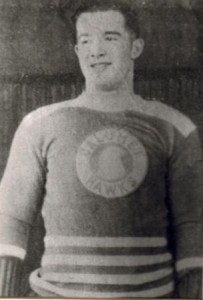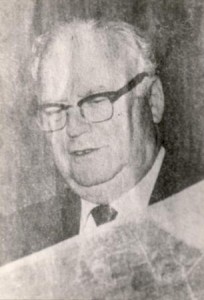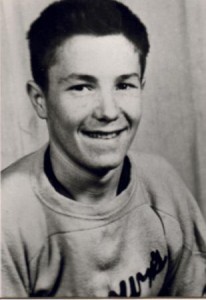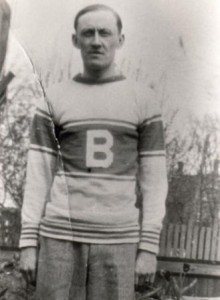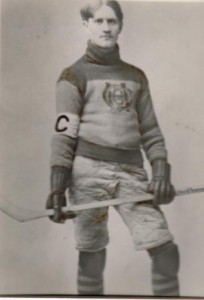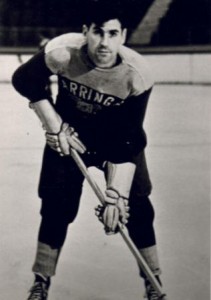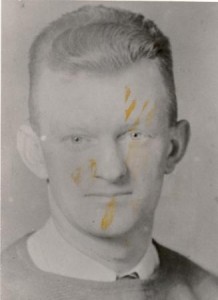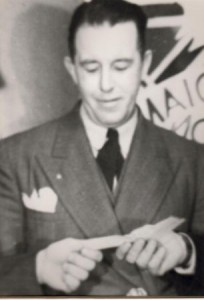 Larry Smith’s qualifications for the Sports Hall of Fame can come under any of the following headings: Boxing, wrestling, softball, baseball, football, track and field, bowling and coaching.
Larry Smith’s qualifications for the Sports Hall of Fame can come under any of the following headings: Boxing, wrestling, softball, baseball, football, track and field, bowling and coaching.
A very astute business man, he has often been known as “Square Deal Larry”. His idea of a square deal is to trade you a pork chop for a pig and the pork chop would probably be a shoulder cut.
Larry did not come into athletic prominence until around the age of 16 due to the fact that he was an only son and was more than urged to lead a sheltered life. He played a pretty good football game with
Collingwood Collegiate under the coaching of the late Lou Stapleton, earned a letter in Track & Field and made quite an impression in the Coronation Meet at Owen Sound by winning the 100 and 220 yard sprint in a pair of great duels with Eddie Sergeant, the well-known former M.P.P. for Grey. He finished his secondary school education at Glebe Collegiate in Ottawa At Glebe, he took up boxing and wrestling and went to the finals in both these sports in the Ottawa Valley championships.
Incidentally, he lost out in the boxing final to the late Johnny Quilty of St. Patricks College. Quilty later became a hockey star with the Montreal Canadiens.
At the Aggie College in Guelph, he played football and made the college track and field team in the sprints and relay races. Along came WWII and Larry enlisted with the 541 st Parachute Regiment. He won the light heavyweight boxing title at Fort Bragg and found in several important military boxing tournaments at Camp MacKall, Fort Jackson, Camp Gordon and Fort Benning.
He was selected to represent Airborne Command in the All American Army Golden Gloves at Charlotte, North Carolina, in 1943. He won three bouts and lost in the final. During his active duty in Europe, he made sixty parachute jumps and took part in the bloody battle of Arnheim. While in the army of occupation in Germany and Austria, Larry took part in several wrestling bouts with Captain Vern Smith, former American Amateur Union and American Intercollegiate champion. He won points in the General Patton Third Army Track and Field Meet and ran the anchor leg on
the 506th Regiment Relay team in Munich.
After the war, Smith returned to Collingwood, where he pitched softball for the Collingwood Legion softball team. The Legion team won the Blue Mountain League title in 1949, the Legion District title and went to the Ontario final. In 1950, he played centre filed for the Collingwood Intermediate baseball team and won the Georgian Bay League batting championship. This team also went to the provincial final.
He took up 5-pin bowling after he settled down to business as the owner and operator of the Collingwood Bowling Lanes and had a 250 average for 6 straight years. His best effort was a 256 average and a 975 triple in Senior play. He also won the Legion District Singles title at Newmarket.
Larry coached the Collingwood Collegiate Senior Football team in 1947, acted as wrestling and boxing instructor for the Collingwood Sea Cadet Corps and supervised a bowling school for Grade School children.
Collingwood fans got a chance to Larry in action when he challenged the Masked Marvel, who was then giving wrestling exhibitions with the Kings Brothers Circus. With the assistance of a thick coating of olive oil and the referee (long-time friend Don Jeffrey) Smith beat the Masked Marvel, much to the delight of the hometown fans.

